SaaS is a tough industry to thrive in.
There’s the competition…
The constant innovation…
And, perhaps most importantly, the churn.
You know what I’m talking about.
Losing your hard-earned customers after spending cold hard cash and time acquiring them.
It’s the name of the game.
But, it doesn’t necessarily have to be.
You could be losing less money and keeping more customers by learning how to reduce SaaS churn.
If that’s what you want, keep reading because I’ll be teaching you just that.
SaaS churn rate formula
First, let’s get back to the basics.
Here’s the formula for churn rate:
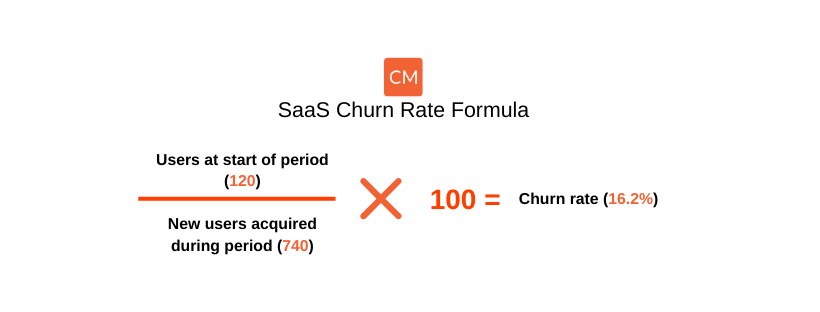
It’s the number of users at the start of a period divided by new users and multiplied by 100.
You then have the number of users lost (churned) during that period.
A period can be one month, quarter, year, etc.
Once you understand how it’s calculated, you can crunch your own churn rate to see how you stack up against the benchmarks ahead.
SaaS churn rate benchmarks
Okay, let’s dig into some data about the average SaaS churn.
A survey of 424 SaaS companies
KeyBanc Capital Markets is a finance company that performed a survey of private SaaS companies in 2019.
They interviewed the senior executives of 424 companies who were in companies with:
- $8.7MM median 2018 Ending ARR
- Median organic growth in ARR of +40%
- ~90 median employees
- ~300 median customers
- ~$28,000 median annual contract value
While the report had no shortage of exciting and insightful information about the SaaS industry, one thing stuck out in particular.
Can you guess what it was?
The churn rate!
Firstly, the median gross dollar churn was 12.7%.
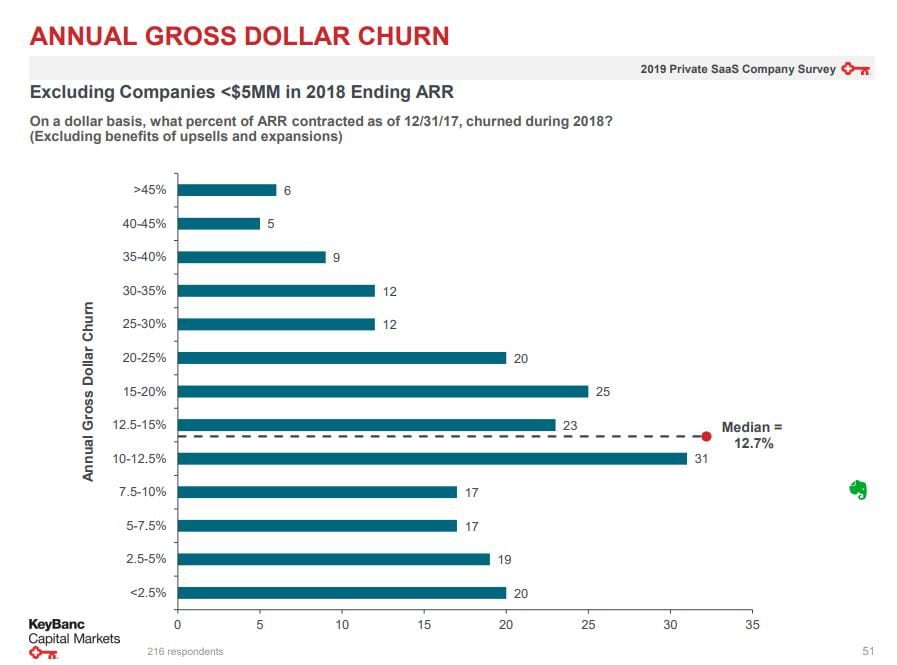
Additionally, the annual non-renewal rate was 13.2%.
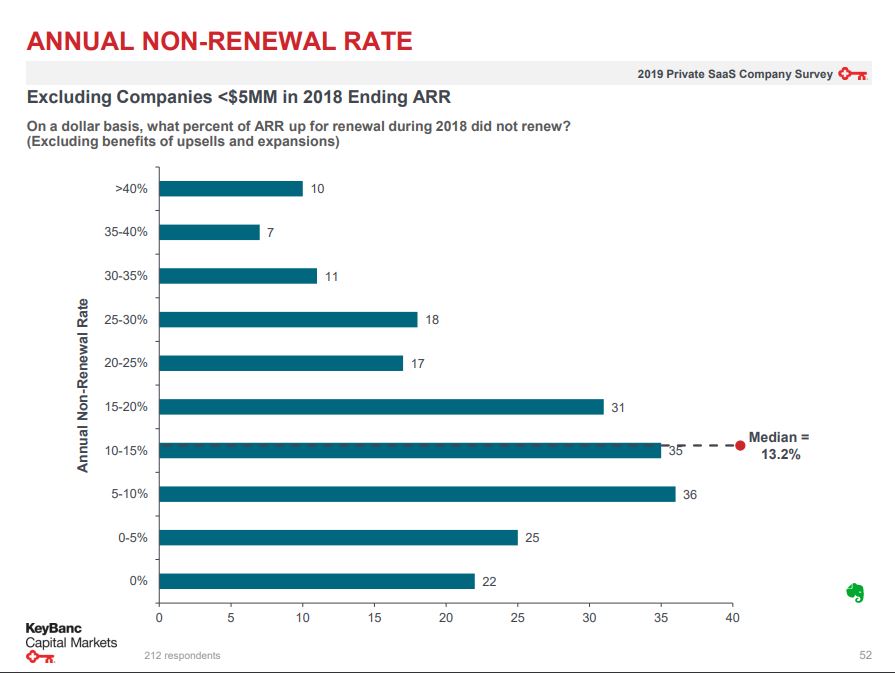
You commonly hear people throw around numbers like 2%, 3%, and 5%.
Well, this study shows different.
Don’t be too spooked if your churn numbers are getting into the double digit territory. It’s normal.
Totango’s annual SaaS report
Totango is a customer service platform that performed a study of over 500 SaaS companies in 2014. The study ran for several years to maximize the accuracy and usefulness of its findings.
It primarily interviewed managers, vice presidents, and c-level executives in account management and marketing departments.
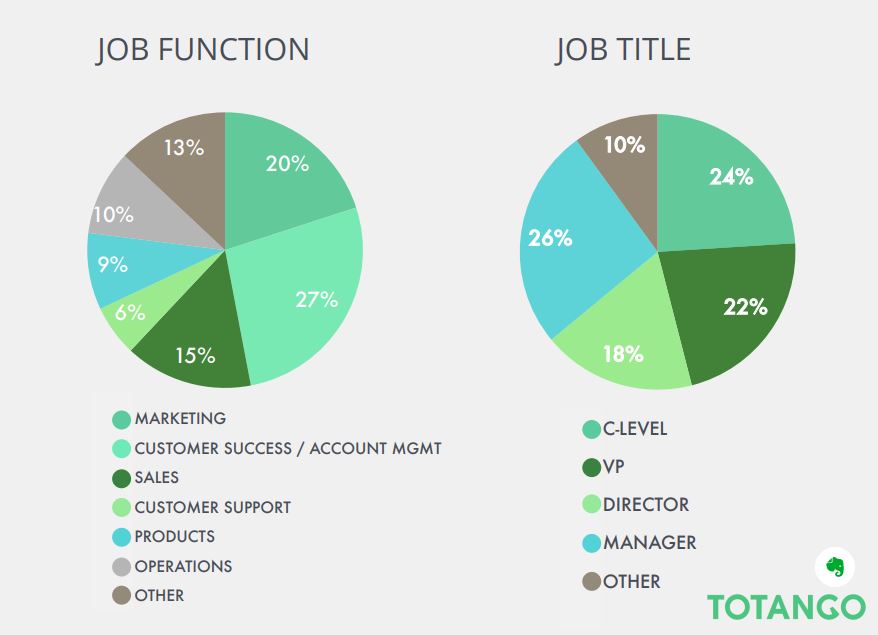
The study concluded that a majority of participants experienced a 0–5% churn rate followed by 5–10% and 10–15%+.

The growth of the participating companies also had an effect on churn as you can see here:
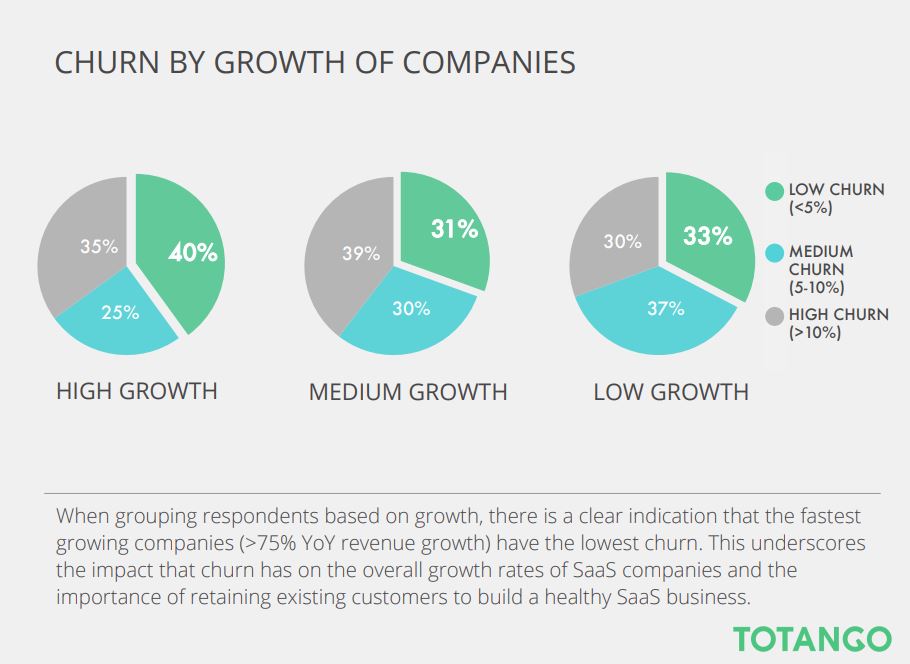
37% of low growth companies had a medium churn rate of 5–10%.
39% of medium growth companies had a high churn rate of 10%+.
40% of high growth companies had a minimal churn rate of 5% or lower.
It seems like newer companies will experience moderate churn as they are figuring out their place in the market.
Oppositely, maturing companies have the highest churn because they are in the midst of growth and experimenting.
Once a company has solidified its product and customer base, churn tends to reach a minimum.
Where are you along with the product and business lifecycle?
It may explain the churn rate you’re experiencing.
40 publically traded SaaS companies
Blossom Street Ventures is a venture capitalist firm that studied 40 publically traded software companies to measure their net dollar retention.
This goes hand-in-hand with churn as it’s the opposite of losing customers—keeping them.
They claim that a number greater than 100% will result in consistent customer growth and it’s one of the metrics they analyze when investing in companies.
So, they know their stuff.
With that being said, net retention below 100% is bad.
That results in churn, downgrades, and immediate action needs to be taken to improve customer service and experience.
This is what they discovered:

The median net retention rates ranged from 104–112%.
The top five companies had a net retention rate of 144%!
So, don’t just calculate how many customers you are losing.
Calculate how many customers you’re keeping year over year and if this number is going up.
If so, keep doing what you’re doing!
If not, sit tight and use the advice I give later in this article.
An insider look through Baremetrics
Here’s a neat tool.
Baremetrics is a new service that allows SaaS businesses to be more transparent and open.
How?
By displaying every single metric about their performance.
And I mean every.
Revenue, churn, customer lifetime value; you name it.
This is incredible for seeing how larger businesses operate and what their margins and expenses are like.
It gives you a realistic perspective and helps set goals and performance benchmarks.
Look at ConvertKit, for instance:
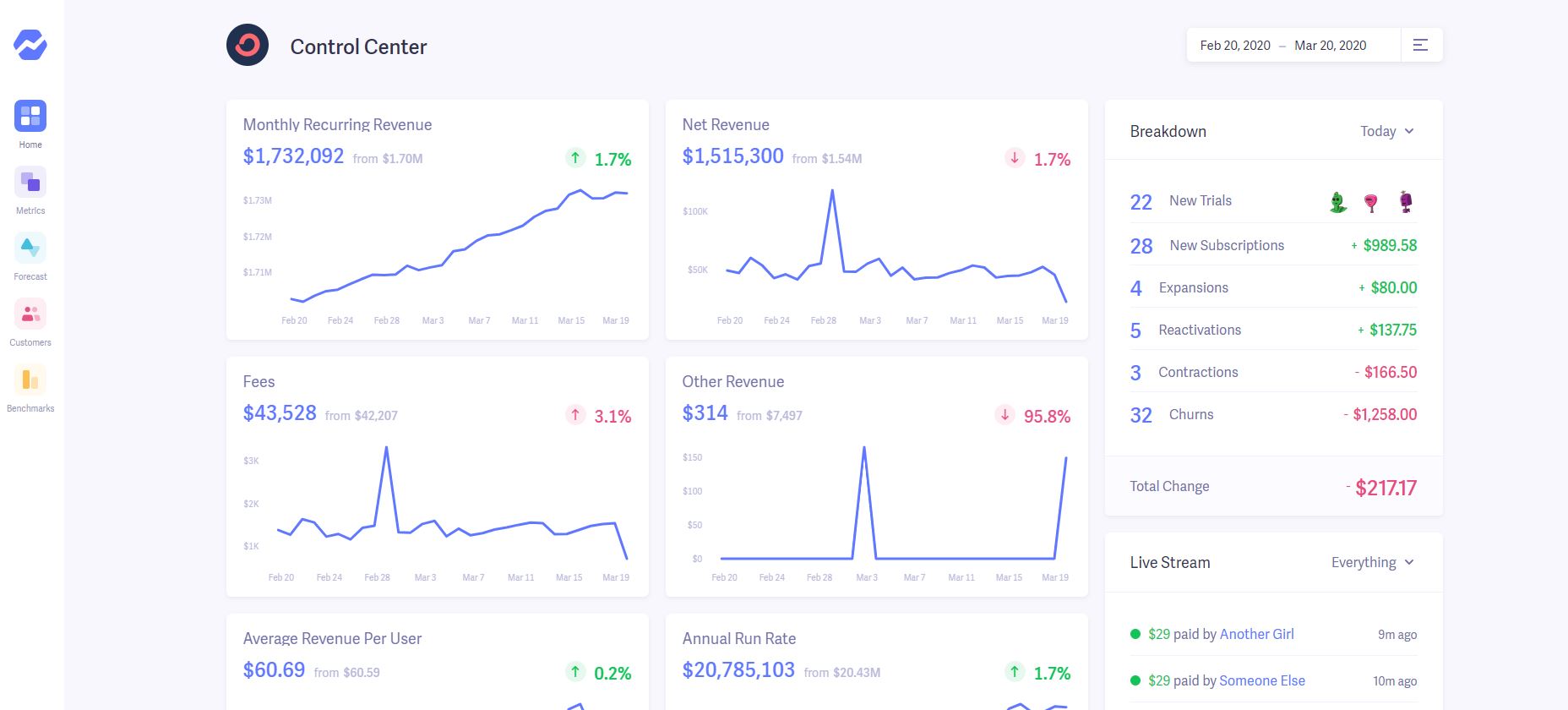
You can check out their user and revenue churn to compare if you’re in the same vertical.
That brings me to my next point.
How to reduce Saas Churn
You know what average churn rates look like for SaaS companies.
Great.
Now, let’s talk about what you’re really here for: strategies to reduce churn.
After all, that’s what will keep more money in your pocket. 💰
1. Implement chatbots (yes, really)
Chatbots are automated chat conversations that prompt when a user visits a website or takes a specific action.
They are driven by artificial intelligence and can be used to generate leads and improve customer experience.
They’re hands-off, too.
They will save you precious time versus s by yourself.
Although you can take over the chat at any point.
In fact, 57% of businesses agree that chatbots deliver large ROI with minimal effort.
Who doesn’t want that?
2. Produce content for every buyer persona
Keeping customers is all about providing value.
And, one of the easiest ways to provide value is through publishing content.
Content provides knowledge, resources, and advice to improve a customer’s business and life.
However, not all customers need the same content.
That’s where the buyer’s journey comes into the picture.
There are three stages to be aware of:
- Awareness: A customer becomes aware they have a problem that needs solving.
- Consideration: The customer has performed research and understands their options.
- Decision: A final decision is made about what product and company to choose.
With this in mind, you can produce content for all three parts of the funnel.
Top of the funnel
Imagine a funnel.
It’s wide at the top and gets narrow as it goes down.
Think of the top of the funnel content like casting a wide net.
You want to catch as many fish as possible to sort out the good ones later.
These include blog posts, podcasts, and YouTube videos.
They capture the widest audience possible, then you move onto…
Middle of the funnel
This is where you sperate random users from prospects.
A prospect is going to be much more serious about learning about a company or product.
Naturally, they’ll put in more energy to do so.
That’s why I recommend offering lead magnets.
These include:
- Whitepapers
- Case studies
- Checklists
- E-books
- Cheatsheets
- Etc.
However, they need to be placed behind a gate like a form.
That added effort a prospect invests by entering their contact information for a resource instantly segments them.
Bottom of the funnel
The bottom of the funnel is where you will find the hottest leads and opportunities.
One way to instantly separate these individuals is by offering consultations or demos.
It’s also the perfect opportunity to sell them on your service and get them onboarded.
These users are at the decision stage, so make sure you have a phone script that would give Grant Cardone a run for his money.
It should cover the value proposition, product benefits, and overcome common objections.
This will increase the number of conversions you generate at this stage.
3. Go above and beyond with customer service
Customer service is a product.
Never forget that.
It’s so easy to focus on the obvious: marketing, advertising, the software, etc.
But, how you treat customers and experience you create for them is a HUGE part of it, too.
In fact, one-third of consumers will never go back to a business after a bad experience.
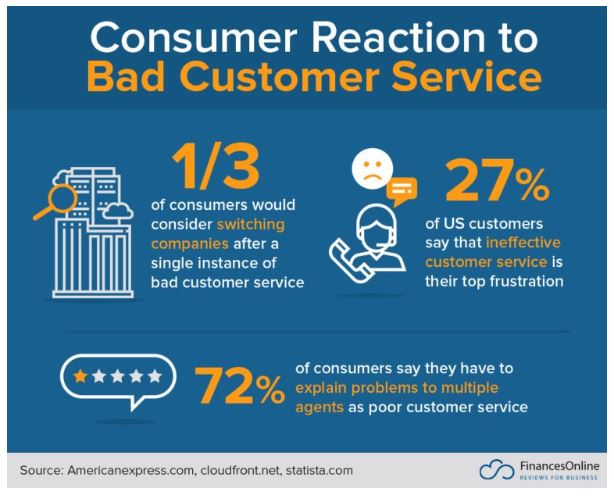
Wouldn’t you?
With that being said, I recommend that you improve customer service by:
- Offering more ways to contact your business like email, live support, and phone.
- Creating documentation and FAQs.
- Presenting discounts and coupon codes.
- Training staff to be positive, helpful, and encouraging.
- Improve the user experience of your website and product.
4. Ask and implement feedback
Now, how can you go about improving customer service?
The best way is to ask!
Customer feedback is easily one of the most effective ways to gain insight into customer profiles and their interests.
All of which help you improve marketing, advertising, and the experience you offer.
So, how can you do actually pull this off?
Firstly, send out a questionnaire via email or social media through Google Forms.
Ask customers what they enjoy and don’t enjoy about using your product.
Implement this to continually refine your product and service.
Secondly, there are tools like Hotjar that enable businesses to instantly collect feedback from a website.

Customize the widget to include specific questions and visualize the feedback for easy analysis.
5. Learn from each loss!
Sure, you can try this strategy and that one.
Cool.
But, do you know what’s better?
Analyzing your own company and customer base.
They’re different. They’re unique.
Why customers churn from one SaaS startup to another could be wildly different.
Maybe one’s customer service is dog poo while the other doesn’t have a onboarding process mapped out.
Be brutally honest about your organization’s shortcomings and weak areas.
Let data and customer feedback guide you towards where these areas are, too.
Then, fix them.
Create a plan to enhance them and split test new ideas.
Final thoughts on SaaS churn rates
SaaS companies all have one common issue: churning customers.
A business spends money, time, and energy to acquire customer only for them to flush down the drain.
Horrible, right?
Well, there are steps you can take to improve retention.
It begins with understanding that the average churn is approximately 0–10% based on the findings we examined today.
Measure yours and benchmark it against this number.
Then, make a plan of attack.
Brainstorm strategies for:
- Adding more value
- Improving customer service
- Enhancing the user experience
- Etc.
All of these techniques have the potential to make customers stick around flr longer.
And, that means sale.
What’s your plan to reduce churn?














